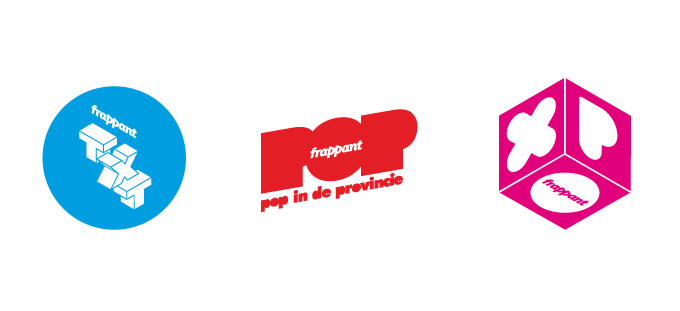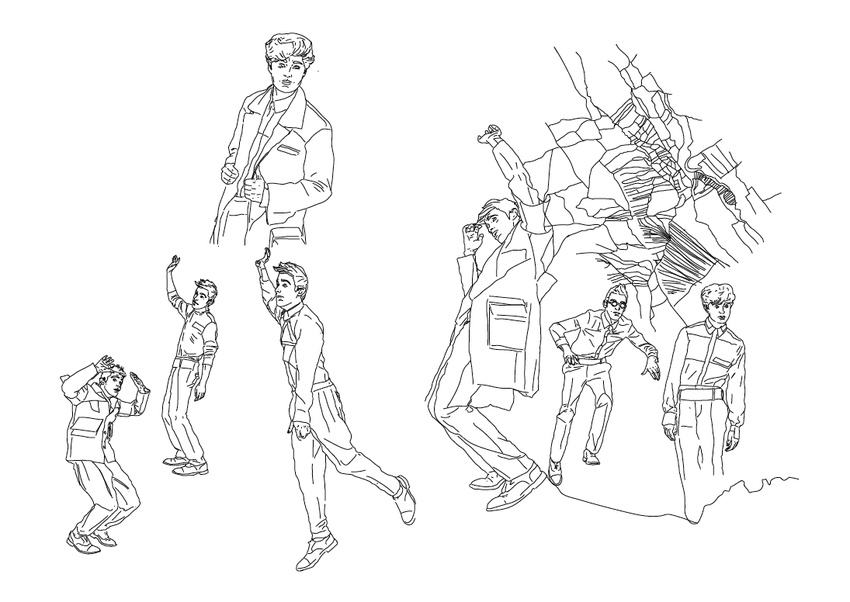Bart Kiggen is a designer based in Antwerp, who loves everything about pop culture. He became interested in design in the 80ties when he first saw the iconic logo of the Transformers. All of the icons and graphics in the old cartoons really sparked his interest in graphic design.
Please describe the creative process behind your submitted works.
It is a mix between corporate work and works for smaller clients. With the corporate work, there is a lot of structure. When you have a big identity project you tend to look at different things while making the graphics; for example fashion design. The first relies more on ratio and the latter relies more on emotions.
However, the first stage is always the same: extensive research. This is very important because I like to know my clients before I start working on something for them.
How would you describe your work style to people who first come across it?
I try to make a mix; I’m not one of those designers that stick to a rigid design style. The method of working always stays the same though, but some styles just work for some clients and not for others. Forcing a style on a client is also a big no-no, I just show them possible things we can do, but the style is defined by a sort of mutual agreement.
Is there anything intrinsically Belgian that you think has been a strong influence or inspiration in what you do?
No, although I like the fact that Antwerp, for example, is quite small but there are a lot of graphic design studios. There is not the cutthroat attitude you may find in bigger cities. It’s more laid back…
Do you see any particular trends emerging in Belgian design? What do you think the future will bring for design in Belgium?
Mixed feelings I see lots of nice stuff happening, but the graphic design departments here have a very questionable reputation, so I expect a lot from the self-taught designers. In fact, I see myself as self-taught because there is no grown-up teaching in the graphic design and illustrative discourse.
How can you learn from a teacher who doesn’t know who Herb Lubalin or Peter Saville is?
Of course, there is a problem with hobbyists who think that just because they can photoshop they are graphic designers…but I think this is a general problem.
How important is the ‘play’ factor in your work?
It plays its role in every assignment; otherwise, the work would be a bit monotone.
At the moment, I’m working on some illustrations for a big company involved with ‘safety on the work floor’ but even this can be playful, I think. I always like the work of Otl Aicher, because in his work the mix between playful and communicative/informative is the best.
How important is experimenting with design to you? Or do you just follow current trends?
It’s important of course, just don’t take it too far. We are at a point in time where so many trends exist next to each other. This is also logical because there are not many new things you can do in graphic design. This is not particularly a bad thing; you just remix the past and combine. Do you have different approaches in terms of creativity when you deal with motion and graphic works?
No, it’s the same.
Do you believe that Belgium provides good resources for design? Is it easy for new designers to promote themselves?
Absolutely not, we have a big tradition in advertising and there is a lot going on to promote this, but graphic design is treated a bit like a stepchild and is almost never mentioned and there are too few initiatives. That’s why I really welcome the Creative Network project.
Can you say that Belgium has a creative client base?
It’s a mix of people who genuinely want good design and others who just see you as a tool to make what they want (if they don’t make it themselves).
I try to avoid the second group or try to ‘convert’ them.
What you will be doing around the same time next year?
Some more 3d work I hope, I just started working in this field and I love it.



